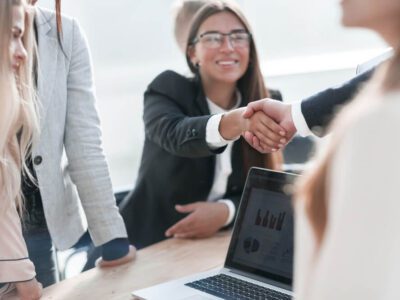In this episode of the TeamBonding Saves the World podcast, Mary Erlain, Author, International Speaker, and Founder of Peak Systems Strategies joins our host Rich Rinnisland to discuss the dynamics of having five generations in the workplace and how to navigate and embrace their differences and successes. To listen to this exciting conversation in full, click here.
What Is A Multi-Generational Workplace?
A multi-generational workplace can be described as a workforce that has personnel from multiple generations. These days, multi-generational workplaces are very common and oftentimes employees from several different generations work together on a daily basis.
The five generations that may make up a workforce are:
- Traditionalists (born 1928-1945): These are older individuals (aged 70 or more) who are either working because they want to or must. They are influenced directly by their environment and thus were most vulnerable to being affected by Covid, physically and mentally.
- Baby boomers (born 1946-1964): Half of this generation was raised in the sixties amidst the Vietnam war while the other half during the political segregation of the seventies. Unsurprisingly, this group tends to distrust the government.
- Gen Xers (born 1965-1980): A much more progressive and educated generation than those before them. GenXers are very independent individuals and were the first to truly embrace technology, both for education and entertainment.
- Millennials/Gen Y’s (born 1981-1996): The often-misunderstood generation is described as ingrained in technology, very team-driven and multi-taskers.
- Gen Z’s (born 1997-2012): The younger generation who often can’t go a day without their screens. Gen Z’s are the most interconnected, with their social circles encircling the globe.
Understandably, generational differences in the workplace can pose a significant challenge. For instance, as Mary identifies, “there is a tendency for baby boomers or traditionalists to see a younger employee and act in a parenting manner instead of as a manager with accountability, metrics, and KPIs.” On the other end, when younger people step into management roles and have to manage workers who are older than them, they may feel as though they are managing their mom and dad. It takes a great deal of emotional intelligence and communication, amongst other attributes to navigate these types of multigenerational challenges.
It is important that managers and HR personnel understand that there are nuances and differences amongst generations. By identifying and addressing these differences, and also the subtle similarities across the generational lines, companies can reap the benefits that multi-generational workforces have to offer.
How to Navigate and Embrace the 5 Generations in the Workplace
Now more than ever, corporations must embrace the five different generations if they are to exist and thrive. Companies will foster better communication amongst team members, benefit from unique perspectives working together to problem solve and create new opportunities for mentorships and knowledge sharing. Leading a multi-generational workforce isn’t easy, but fortunately, it is simpler than you think and begins by focusing on a few fundamental principles.
1. Understand What Your Team Needs
Providing and fulfilling your team’s needs can help make people feel satisfied and fulfilled in their job and feel connected to each other. Leaders need to put the needs of their team above their own and have to start to understand what these needs are. This ties in very closely with the need to communicate. After all, without open lines of communication, how can you identify what your team needs?
The value of this understanding is immeasurable. Oftentimes, the needs and motivators of different departments and individuals vary greatly and need to be catered to. One employee may be motivated by learning, while another may be motivated by verbal recognition. Tailoring management styles to fit these individual needs will help to avoid employees feeling unmotivated, not appreciated, or burnt out.
2. Make an Effort to Learn from Each Other
“Have a culture of being inquisitive,” says Mary. While managing a multi-generational workforce is not without its challenges, it can help you grow as an individual and leader. But only if you make an effort. This can be utilized by encouraging older employees to take younger employees to a company lunch, setting up mentorship programs, or implementing one-on-one meetings between multi-generational workers.
Older generations can also learn from younger generations. From their path to success to what apps they use, the opportunities to learn and grow are endless. All you have to do is ask the right questions.
Learning from each other’s differences and experiences can be very illuminating and helpful not just for you as an individual or leader, but also for the organization’s culture.
3. Improve Your Emotional Intelligence
Emotions drive people. Simply put, emotional intelligence is the ability to recognize the emotional footprint of an interaction and respond accordingly. Unsurprisingly, high levels of emotional intelligence put any team in an excellent position to succeed, particularly as they come back together after the pandemic.
Developing emotional intelligence begins with self-reflection and a willingness to understand who is part of a problem and how you are involved. Team members, in particular leaders, must recognize when they are part of the problem. This requires them to focus inwards. To do this, Mary Erlain recommends asking reflective questions such as, “What subtleties or maybe not so subtle things are employees bringing to us?” Team members can also ask themselves “How is this person motivated and what could I have done better to cater to that?” It is also important to consider the employee’s communication style. When a person is not communicated to in a way that they are comfortable with, it can lead to a communication breakdown.
Additionally, team leaders must understand that even though a problem may be the same in two different situations, the solution doesn’t have to be. As Mary eloquently states, “You’re bringing a group of people, different names, faces, and social security numbers together. There’s no way you can have some blanket, off-the-shelf kind of solution.” Each situation requires specific thought and consideration to fit the needs of the person raising this problem.
4. Communication
Clear and open communication can help bring a workplace together. Instead of shying away when issues arise, it’s important to begin conversations about them. Create an environment of open communication and problem-solving to prevent a disjointed or inefficient workforce. “You have people perhaps as islands. And they’re each doing their own thing, their own way. They may be getting the result, but you haven’t created a culture. You’ve created a bunch of islands,” Mary points out.
Adopting a bottom-up approach and communicating to understand where people are coming from is essential to create bridges between people. This can be achieved by having in-depth conversations with each member of the workforce to get a better understanding of who they are, how they function, and how they fit into the workforce. By asking cultural and behavioral questions, the underlying motivations, needs, and drivers of each employee will come to light.
Once you have established a baseline level of understanding, you can leverage this information to bring people and groups together in unique and innovative ways. The key is not to lead by assumptions but rather to play to the strengths of each individual.
Looking to Build Team Culture at Your Workplace?
Learn more about embracing the different generations in the workplace to help your company culture thrive by listening to the Generations episode of the TeamBonding Saves the World podcast. Using the different generations’ unique insights highlighted in the podcast will not only strengthen your team but teach them valuable skills no matter their age.










